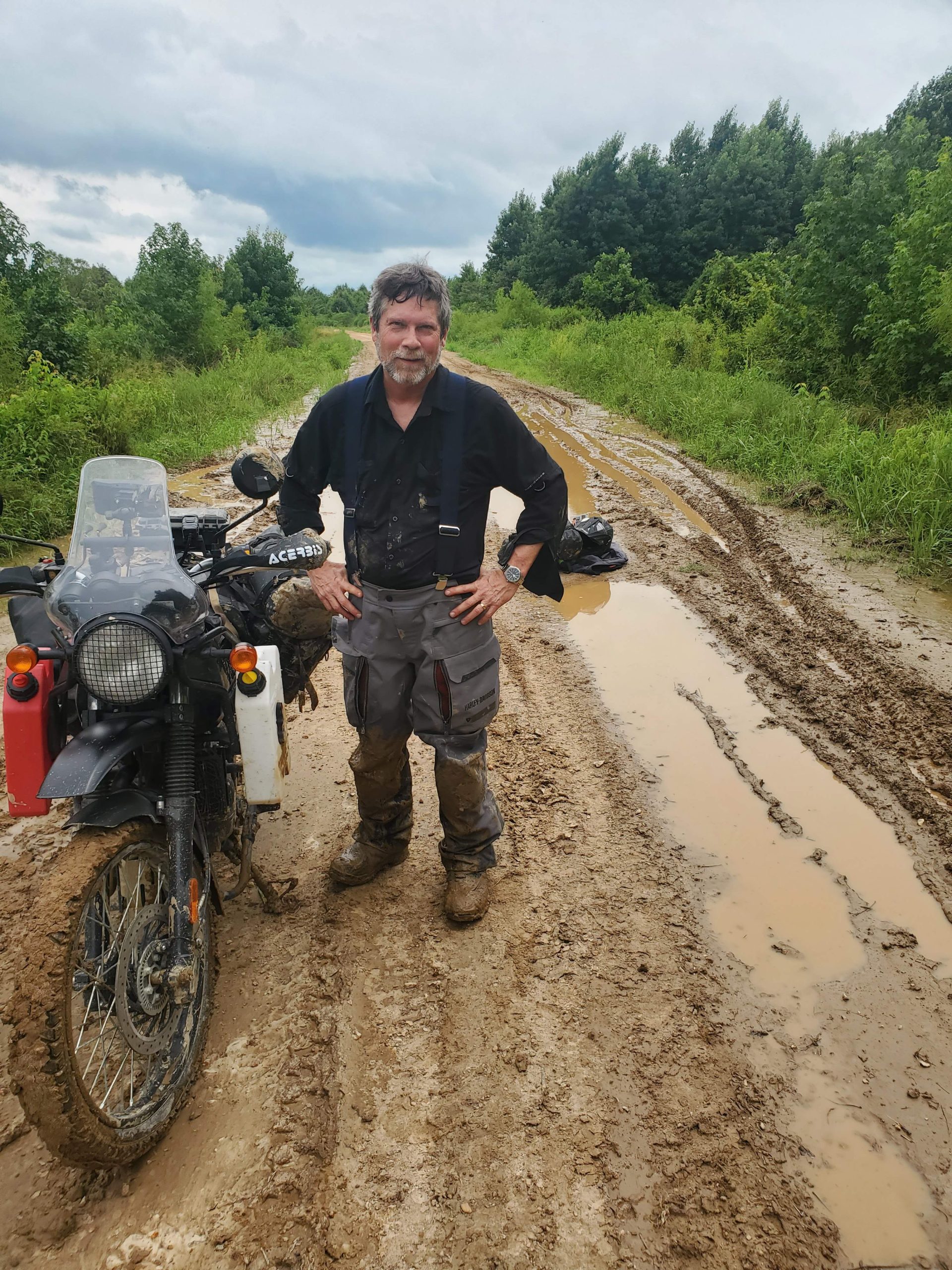Armed with a 2022 Royal Enfield Himalayan, some YouTube videos, and a recent dirt bike safety training course, I took on the Trans-America Trail, a route crossing the United States on mostly unpaved roads and trails. While I had extensive road bike experience, this would be my first time riding off-road for any distance since I was a teen. Along the way, I learned a lot from myself and other TAT riders.
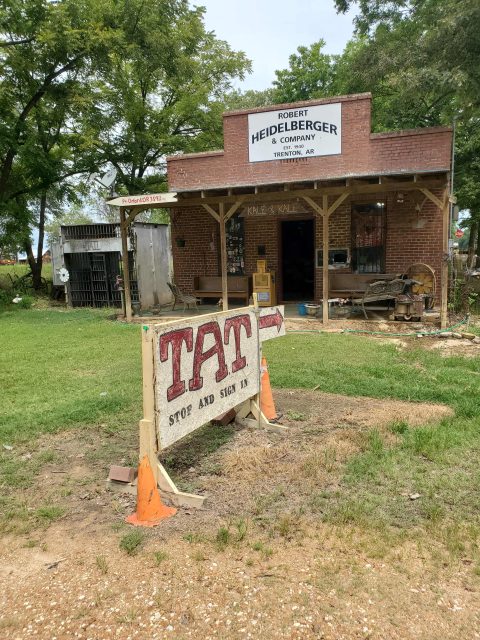
Invest in Yourself
- Invest in yourself. Don’t just watch YouTube videos and expect to be a decent off-road rider. Take an off-road riding class, or preferably, two. Off-road riding, which includes riding gravel/dirt roads and single-track/4×4 trails, is completely different than riding on pavement. Go to gravel lots and practice your turns, evasions, and braking. You’ll be glad you did.
- Go on off-road rides. The more, the better. Gravel and dirt roads are, for the most part, sufficient, but if you can get in some single-track trails, that’s even better.
- Take a tumbling class. I guarantee you will fall—even the best riders do, usually in the mud. It’s one thing to dump your bike at low speed, but when you hit the mud in second or third gear and get thrown, it’s good to know how to fall to minimize your chances of getting hurt.
- Get physically fit. Work your quads, back, and upper body. Picking up a bike multiple times at 10,000 feet is a lot harder than doing so at sea level.
- Learn how to pick up your bike safely. Two safe methods are walking the bike up or using the monkey lift. Bret Tkacs of Mototrek has a great video on these techniques: youtube.mototrek. Whichever method you use, keep your back straight and lift with your legs.

The Bike
It’s best to have a bike dedicated to adventure riding, but just about any dual-sport bike will do. People have ridden the TAT on little 90cc Honda trail bikes, Yamaha Tenere 700s, and R 1250 GS BMWs. I rode a 411cc Royal Enfield Himalayan, while my buddy rode an R 1250 GS BMW. Just be sure it’s a bike you can ride safely, pick up, that can carry you and all your gear.
Street bikes should be left on the pavement. They’re not designed to take the brutal conditions one faces on the TAT, such as ruts, rocks, and the hundreds of miles of washboard. On one such stretch in Oregon, I had both my Rotopax cans work loose and eject themselves at speed.
Another consideration for bike choice is the ability to get it serviced. A bike that can be serviced just about anywhere and is easy to get parts for is a lot easier to deal with than a bike that has few service facilities. I love my Himi, but I had to go hundreds of miles out of my way to get it serviced and repaired (and I’m still waiting on some parts).
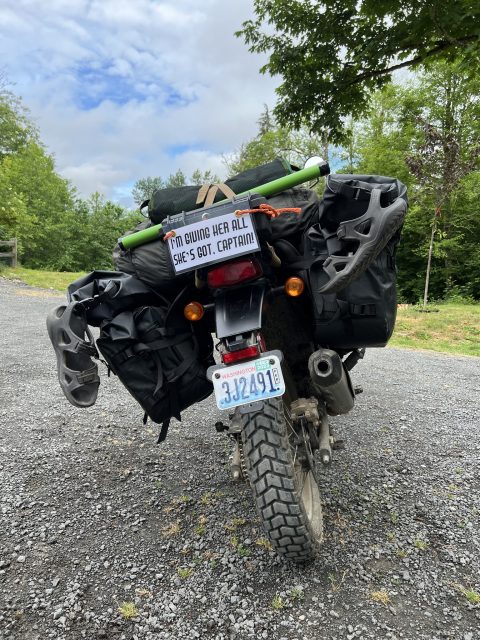
Bike Modifications
Few bikes come fully ADV prepared, so you’ll need to make some modifications, the most important being installing engine crash guards. They protect your bike but also give you additional hard points for lifting. A skid plate protects your engine, and a master cylinder guard ensures you don’t lose your rear brake. Handguards are another essential. They protect your hand from branches and rocks, as well as your levers when you drop the bike.
Other mods might include a heat shield over the muffler if using soft panniers, a larger gas tank if your bike can’t get 200 miles a tank, and tires suitable for dirt, gravel, and mud.
Rubber in the pegs means slippery when wet. Remove them so your foot doesn’t slip off during the many water crossings. You’re going to spend a lot of time on the pegs, so practice beforehand.
A good GPS and phone mount are essential. Go with one that can handle the vibration and hold onto your phone. Quad Lock has served me well. Be sure to include a charging method for the phone, such as a simple USB charger with an on/off switch.
For safety purposes, soft panniers are preferred over hard ones. When you fall, you’re less likely to get your leg trapped or broken.
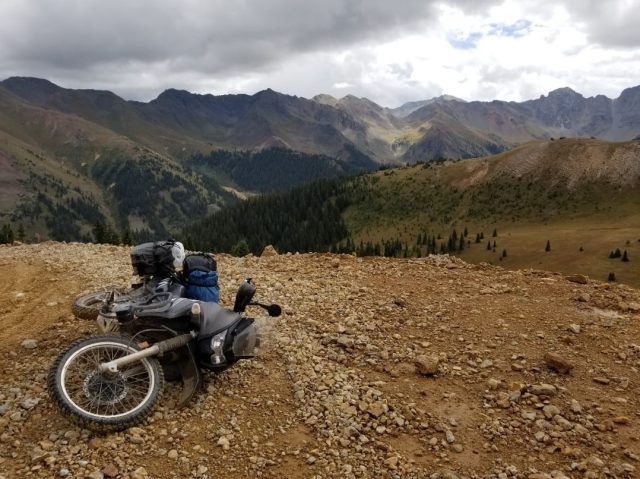
Tools
Bring whatever tools you need to effect repairs on the trail. You’ll likely be miles from anywhere when you have to. If your bike doesn’t come with a tool kit, put together one that can handle everything on your bike. At a minimum, this should include a hex tool, open/closed wrenches, a multi-head screwdriver, and maybe a small ratcheting or T-socket wrench set. A tire repair kit and tire changing tools are essential, as are duct tape, zip ties, and baling wire. If running with tubes, carry a spare that will fit your bigger tire (it will work in your smaller tire in a pinch).

All the Gear All the Time (ATGATT)
To me, this is a no-brainer. I wore full armor, adventure boots, armored gloves, and a full-face adventure helmet. It’s not what I would wear again. The basic essentials are a helmet with eye protection, adventure or enduro boots, gloves, and a lightweight armored shirt and pants.
For the helmet, I recommend a modular type. They allow you to talk, drink, and snack without having to remove the whole helmet. Eye protection is necessary, as you’ll be getting hit in the face with branches, bugs, rocks, and dust.
For body protection, a compression long-sleeve shirt with protection for knees, elbows, shoulders, front and back (much like what enduro riders wear), and abrasion-resistant pants with knee and hip armor should suffice.
Dealing with rain and extreme temperatures is a common occurrence. Use a rain suit that goes over your riding outfit and a puffy or merino wool hoodie to go under it. A wicking T-shirt under your compression shirt is good in the desert and Deep South.
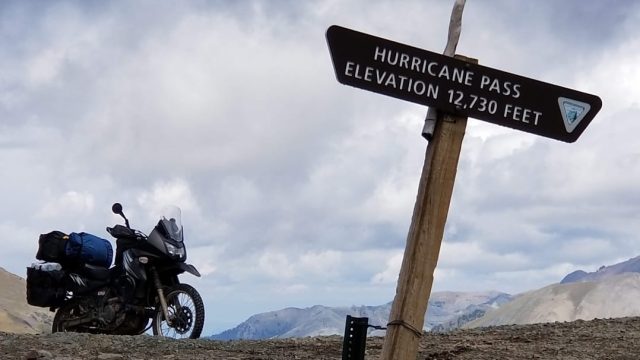
Trip Planning
If you can, travel with a buddy. It’s a lot safer, and you’ll have somebody to help you pick up your bike. Get a helmet-mounted Bluetooth communications system that works between you and your buddy, or develop hand signals.
You’ll want to get some TAT GPS tracks, either through transamtrail.com, gpskevinadventurerides.com, or other open sources on the internet. They’ll likely require running through some computer software before installing into your GPS. All will have route problems, but some are better than others. Learn how to install the tracks and use your GPS.
Figure on traveling 200 miles per day, more or less, and plan accordingly for food, night accommodation, and fuel. You’ll also want to plan on bike maintenance and tire replacement. You can order tires online and send them to some repair shops that will install them for you. Learn more by joining the Trans-American Trail group on Facebook.
Weather plays a big role: heat and humidity in the South, monsoon rains and extreme heat in the West, and snow in the passes. Colorado’s passes usually don’t open until June and can close in September. Rain anywhere in the West turns the roads into impassable quagmires. Plan accordingly.
Take only the clothing you need, but be sure it’s quick-drying. A couple of T-shirts, underwear, socks, a long-sleeve shirt, and spare pants/shorts should suffice.

On the Road
Very few speed limit signs exist on dirt and gravel roads, so be sure you know the speed limits for each state. I typically rode between 35 and 45 mph unless I spotted a speed limit sign. Don’t exceed your riding limits, either speed or road condition-wise.
Oklahoma is notorious for unmarked intersections, so slow down and watch for other vehicles. A few seconds of caution might be the difference between completing the TAT or visiting a local hospital. Oklahoma mud is also impassable, so skip any you see.
When crossing mountain passes, try to do so in the morning, as thunderstorms usually develop in the afternoon.
Finally, keep an eye out for critters, both wild and free-range livestock. They seem to enjoy jumping in front of moving motorcycles.

Basic Bike Maintenance
Become familiar with basic bike maintenance, such as checking tire pressure, cleaning and lubing your chain, switching out filters, and changing oil. Check tires and clean and lube your chain daily. This shouldn’t take more than ten minutes.
You’ll likely be cleaning your chain daily. Spray it with chain cleaner, brush it off with a chain brush or toothbrush, wipe the dirt/grease off, then lube it with chain lube. Be sure to clean the inside and outside of the chain, along with both sides.
Check for loose nuts and bolts, particularly after a day of washboard.
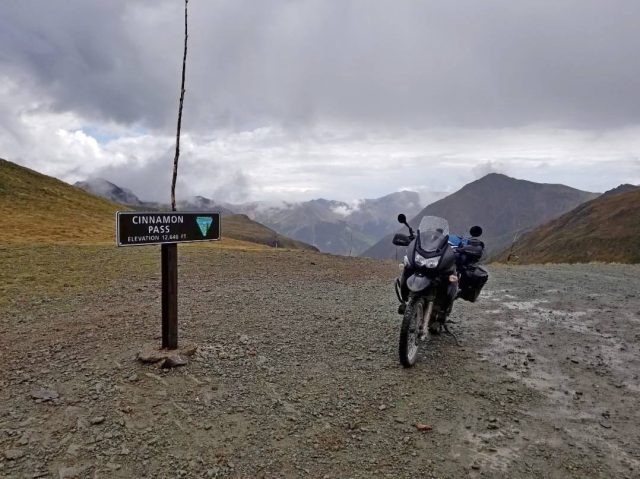
Emergency Planning
Hope for the best but plan for the worst. Carry a small first aid and learn how to use it. In my kit, I had large triangular bandages and a tourniquet. Keep it readily accessible, not buried deep in your bag.
You’re going to be out of cell phone service a lot, so have some sort of satellite communications, such as a Garmin InReach Mini 2, Spot, or Arc (Bivy or ResQlink).
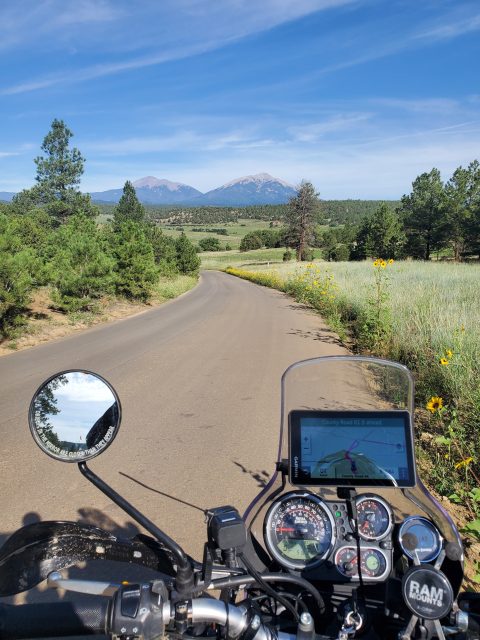
In Conclusion
Prepare yourself and your bike. Take the right tools and plan accordingly. Ride with ATGATT and within your abilities, and maintain your bike.
Our No Compromise Clause: We carefully screen all contributors to ensure they are independent and impartial. We never have and never will accept advertorial, and we do not allow advertising to influence our product or destination reviews.


